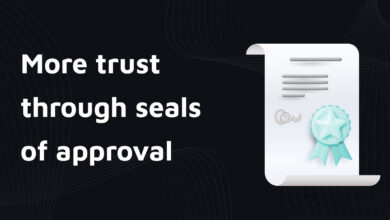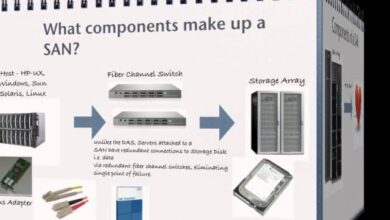4 Helpful Ways to Say Goodbye to Burnout

A job can become unbearable for employees under constant stress. This much is common sense, but did you know that burnout has become habitual for a great many employees?
Typical signs of burnout include decreased productivity, irritation, depression, anxiety, poor communication, and missed deadlines.
These are all serious indicators, so make sure to be on the lookout for them. Better still, make sure they never manifest!
Burnout is a huge issue in the hectic workspace of today, so it is crucial to come up with efficient methods to eliminate it.
The task may not be easy but it is achievable. Be productive and persistent!
Let’s take a look at some of the approaches that can help businesses send burnout packing.
Hire a Fractional Executive
Firstly, hire a fractional executive to help out with the burnout in your company.
Fractional executives (or integrators, as they are more commonly called) have a multitude of skills that can help businesses improve their performance and processes.
Dealing with burnout may be a side note, but it is a huge leap for your entire organization all the same.
Who are integrators?
The term “integrator” was coined by Gino Wickman in his best—selling business books “Traction and Rocketfuel.” You typically learn about integrators when implementing the Entrepreneurial Operating System (EOS) as a management practice for your company.
“An Integrator is a person who is the tie—breaker for the leadership team, is the glue for the organization, holds everything together, beats the drum (provides cadence), is accountable for the P&L results, executes the business plan, holds the Leadership Team accountable, and is the steady force in the organization.”
(EOS Worldwide).
Typically, integrators possess specific soft skills, which can make a huge difference within organizations. Some of them include:
- Balanced behavior patterns
- A balanced orientation
- Knowledge and competence needed for efficient decision-making
- Sense of unity and alignment with the company’s vision
- Ability to pinpoint and resolve disputes before they escalate
Merely the first and the former should suffice to take the stress levels off your team, but the more the merrier!
Do consider hiring a fractional executive as they can help your business transform into a happy and successful environment.
Deploy New Tech to Streamline Manual Processes
Okay, so new tech seems to be unavoidable in any context. When it comes to businesses, it is used left and right, for purposes needed or unneeded.
Needless to say, picking only the tools that you need is essential, otherwise you’ll increase employee burnout rather than curb it.
One notable example of where apps can help is your customer experience. Consider chatbots for your customer service processes. It won’t remove the human touch, but will instead provide immediate assistance, and free up your real life breathing agents to be even more personable and spend more time with customers.
Use Software to Reach Your Goals
Using software to reach your goals is probably the best use case in the business context.
However, this may seem a bit vague, so let’s elaborate a bit.
Different strategies are used by businesses to make their teams more effective. Some of these are universal, while others are unique to the workplace.
That is to say, while there isn’t a single strategy for perfecting the practice, there are some methods that can assist you in the undertaking.
Two of the best-known methods are standard operating procedures (SOPs) and Objectives and Key Results (OKRs).
What Is an SOP?
Standard Operating Procedures detail how organizational procedures should be performed. Each process should focus on individual and group tasks and include reference points describing how to simplify them.
An SOP is a manual that may include checklists and charts or just basic tips. Ideally, an SOP template should include generic and universal steps specific for all organizational procedures, whereas the remainder should be fine-tuned in line with the specifics of the target process.
What Are OKRs?
Objectives and Key Results (OKRs) is an agile framework defining operational goals. The OKR methodology can help businesses increase their transparency, achieve alignment, and boost agility.
OKRs have three chief characteristics:
1. OKR as a framework: OKR establishes a consistent pattern for defining qualitative goals and quantitative key results. Both of these aspects help measure the objective’s achievement level.
2. OKR as a strategic link: OKR links organizational vision and mission to operational business. This characteristic establishes an OKR as a driving force behind the purpose (a.k.a. meaningful work).
3. OKR as an agile process: OKR serves as the vessel for driving agility and organizational learning.
When defined properly, OKRs can help employees stay in the know, thus decreasing their stress levels.
Offer Flexible Work Models
Last but not least, do give a thought to flexible work models.
In this time and age, not offering advanced work models is certain to not only make your employees frustrated but it will also make them look for other job prospects.
That being said, that doesn’t mean that everyone is looking for remote work. Some people prefer office work, while others wouldn’t accept it in a lifetime.
Fortunately, flexible work models are exactly that — flexible, meaning there’s a solution for everyone.
There are six models:
- Partially remote work, large office space — the majority of managers and workers spend most, but not all, of their time at the office
- Almost entirely off premises — mostly remote work with no office space
- Multiple microhubs — management and employees are dispersed across small microhubs located in different cities (or countries, depending on the scope of your business operations)
- Partially remote work, with flexible office space — no permanent offices; rented flex space used for periodic collaboration (but not connectivity)
- Almost entirely on premises — limited remote work, large office space the majority of managers and workers
- Partially remote work, multiple hubs — multiple offices with the workforce dispersed among them
Be sure to include this information during the training process. Ensure that every team member has the resources that they need to reach their goals and meet their deadlines. But don’t forget to keep it fun, and put together personable onboarding kits.
Say Farewell to Burnout
As you can see, saying farewell to burnout is not only possible but is also doable!
Don’t forget to mind the usual steps: pleasant workspace, healthy snacks, regular breaks, team building…
By combining small steps with advanced approaches, your business is certain to become loved by the people whose engagement affects its overall success.



